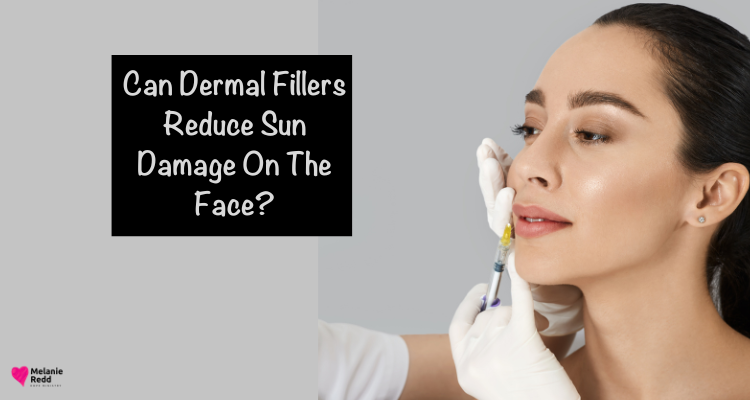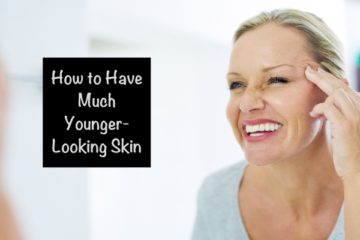Can Dermal Fillers Reduce Sun Damage On The Face?

Can Dermal Fillers Reduce Sun Damage On The Face?
Sun damage can take a toll on our skin, causing premature aging, wrinkles, and uneven tone. Many people wonder if dermal fillers can help reverse these effects. While dermal fillers cannot directly reduce existing sun damage, they can improve the appearance of sun-damaged skin by restoring volume and smoothing out wrinkles.
Even more, dermal fillers are injectable substances designed to add volume to specific areas of the face. They work by plumping up the skin, filling in fine lines and wrinkles, and restoring a more youthful contour. Truly, this can help create a fresher, more rejuvenated appearance in sun-damaged skin.
Also, it’s important to note that dermal fillers in Toronto should be used as part of a comprehensive skincare approach. Combining fillers with sun protection, proper skincare, and other treatments can yield the best results for addressing sun damage and maintaining healthy, youthful-looking skin.
Key Takeaways
- First… Dermal fillers can improve the appearance of sun-damaged skin by adding volume and smoothing wrinkles.
- Second… Sun protection remains crucial for maintaining the results of dermal filler treatments.
- Finally… A comprehensive skincare approach combining fillers with other treatments yields optimal results for sun-damaged skin.
Understanding Sun Damage and Its Effects on the Skin
First, let’s look at how sun exposure significantly impacts skin health. Primarily, it accelerates aging processes and increases the risk of skin damage. UV radiation plays a crucial role in these effects, altering skin structure and function over time.
The Impact of UV Radiation on Skin Health
Indeed, UVA and UVB rays penetrate the skin, causing both immediate and long-term damage. UVA rays reach deeper skin layers, breaking down collagen and elastin fibers. UVB rays primarily affect the epidermis, causing sunburns and DNA damage.
Prolonged sun exposure leads to:
- Premature wrinkles and fine lines
- Hyperpigmentation and age spots
- Reduced skin elasticity
- Increased risk of skin cancer
Also, UV radiation triggers the production of free radicals, which oxidize skin cells and contribute to photoaging. This process can result in a leathery skin texture and uneven skin tone.
Collagen, Elastin, and the Aging Process
Collagen and elastin are essential proteins that maintain skin structure and elasticity. UV radiation breaks down these proteins, accelerating the skin’s aging process.
Sun damage affects collagen production in two ways:
- It destroys existing collagen fibers
- It inhibits new collagen synthesis
As collagen and elastin degrade, the skin loses its firmness and ability to bounce back. This leads to sagging, fine lines, and deeper wrinkles. The skin’s natural repair mechanisms slow down with age, making it harder to recover from sun damage.
Prevention Strategies for Sun Damage
Protecting skin from UV radiation is crucial in preventing sun damage. Key strategies include:
- Apply broad-spectrum sunscreen with SPF 30 or higher daily
- Reapply sunscreen every 2 hours or after swimming/sweating
- Seek shade, especially between 10 AM and 4 PM
- Wear protective clothing, including wide-brimmed hats and sunglasses
Antioxidants can help combat free radical damage. Incorporate foods rich in vitamins C and E, as well as topical antioxidant serums, into your skincare routine.
Regular skin checks are essential for early detection of skin cancer. Consult a dermatologist annually and monitor any changes in moles or skin texture.
The Role of Dermal Fillers in Cosmetic Enhancement
Dermal fillers play a significant role in non-invasive cosmetic procedures, offering solutions for various facial concerns. These injectable treatments provide options for addressing volume loss, wrinkles, and other signs of aging.
Types and Mechanisms of Dermal Fillers
Dermal fillers come in several varieties, each with unique properties. Hyaluronic acid fillers, such as Juvederm and Restylane, add volume and hydration to the skin. Calcium hydroxylapatite stimulates collagen production while providing immediate plumping effects.
Poly-L-lactic acid fillers work gradually to boost collagen over time. Polymethyl methacrylate microspheres offer long-lasting results by creating a supportive structure under the skin.
Autologous fat transfer uses a patient’s fat cells to add volume to facial areas. This technique provides natural-looking results but may require multiple treatments.
Efficacy of Fillers for Sun-Damaged Skin
Dermal fillers can effectively address certain aspects of sun damage on the face. They help smooth out fine lines and wrinkles caused by UV exposure and collagen breakdown. Fillers can restore volume to sunken cheeks and under-eye areas, common issues in sun-damaged skin.
Hyaluronic acid fillers are particularly beneficial for sun-damaged skin due to their hydrating properties. They can improve skin texture and provide a more youthful appearance.
While fillers cannot reverse all signs of sun damage, they can significantly enhance the overall look of photo-aged skin when combined with proper skin care and sun protection.
Potential Complications and How to Minimize Risks
Dermal filler treatments carry some risks, including bruising, swelling, and infection. More serious complications, though rare, can include vascular occlusion or tissue necrosis.
To minimize risks:
- First… Choose a board-certified plastic surgeon or dermatologist with extensive experience in filler injections.
- Second… Discuss the medical history and potential contraindications during the consultation.
- Third… Follow pre and post-treatment instructions carefully.
- Finally… Avoid excessive sun exposure and strenuous exercise immediately after treatment.
Indeed, proper injection technique is crucial for preventing complications. Practitioners should use appropriate needle sizes and injection depths for each specific filler and treatment area.
Also, patient satisfaction largely depends on realistic expectations and proper filler selection for individual needs.
Conclusion
In closing, dermal fillers can help improve the appearance of sun-damaged skin. However, they are not a replacement for proper sun protection. While fillers can temporarily reduce wrinkles and restore volume, they do not directly repair UV damage at a cellular level.
For optimal results, patients should combine filler treatments with diligent sun protection and other skincare measures. Consulting a qualified dermatologist or plastic surgeon is essential to determine the most appropriate treatment plan for addressing individual sun damage concerns.
Were you encouraged by what you read?
Then, would you share this article with a friend, co-worker, or family member?
Or, maybe you can send it to a friend or family member?
This blog occasionally uses affiliate links and may contain affiliate links.
Additionally, Melanie Redd is a participant in the Amazon Services LLC Associates Program.
This is an affiliate advertising program designed to provide a means for sites to earn advertising fees. These are earned by advertising and linking to amazon.com.
Also, for more on my disclosure policy, click HERE.
© Melanie Redd and Hope Ministry, 2024. Unauthorized use and/or duplication of this material without express and written permission from this blog’s author and/or owner is strictly prohibited.
Further, excerpts and links may be used, provided that full and clear credit is given to Melanie Redd and Hope Ministry.
Please give appropriate and specific directions to the original content.



0 Comments